10 Smart Kitchen Swaps for Lighter, Tastier, and Healthier Meals
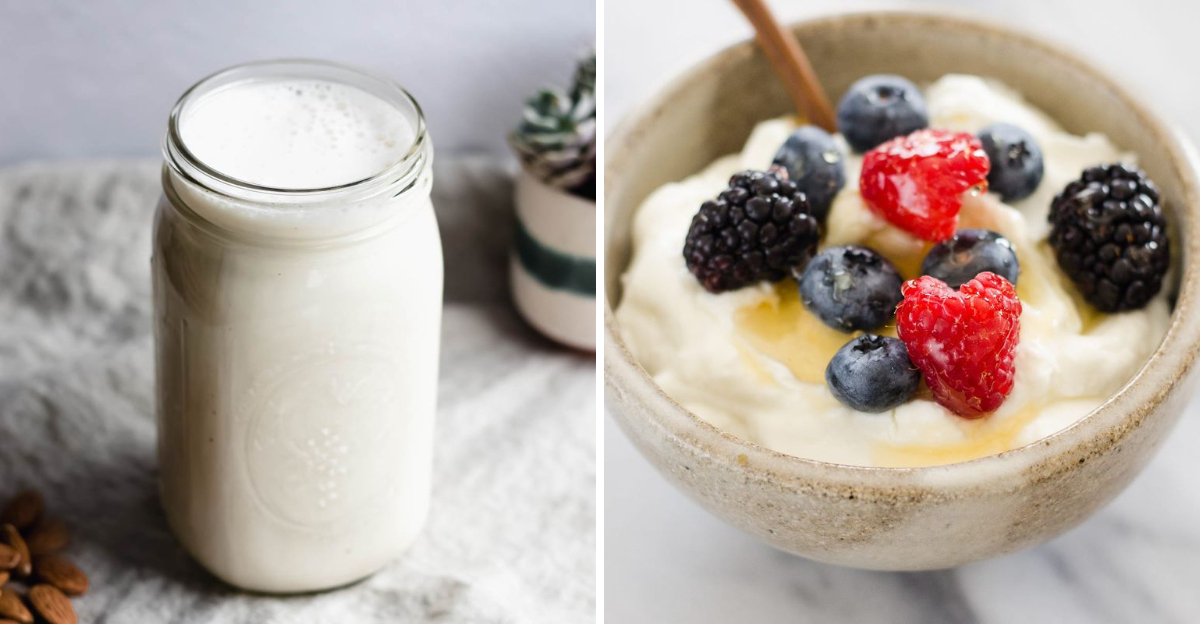
Looking to eat better without giving up flavor. Small changes in your kitchen can make a big difference in how your meals taste and how they enhance your body. By swapping out everyday ingredients for healthier options, you can gently cut calories, boost nutrition, and even explore new, more versatile flavors. These easy and thoughtful adjustments offer a softer approach to eating well. Here are ten simple switches that you can make.
1. Whole Grains Instead of Refined Grains

Brown rice, whole wheat bread, and quinoa bring so much more to your plate than their refined counterparts. These whole grain alternatives pack in fiber that keeps you feeling full longer and helps your digestion run smoothly. The nutty flavors of whole grains actually enhance many dishes rather than just serving as a bland base. Try swapping in brown rice next time you make stir-fry or using whole wheat flour in your baking. Your body processes whole grains more slowly, which means more stable energy levels throughout your day instead of energy drop that comes with white bread .
2. Greek Yogurt Instead of Sour Cream
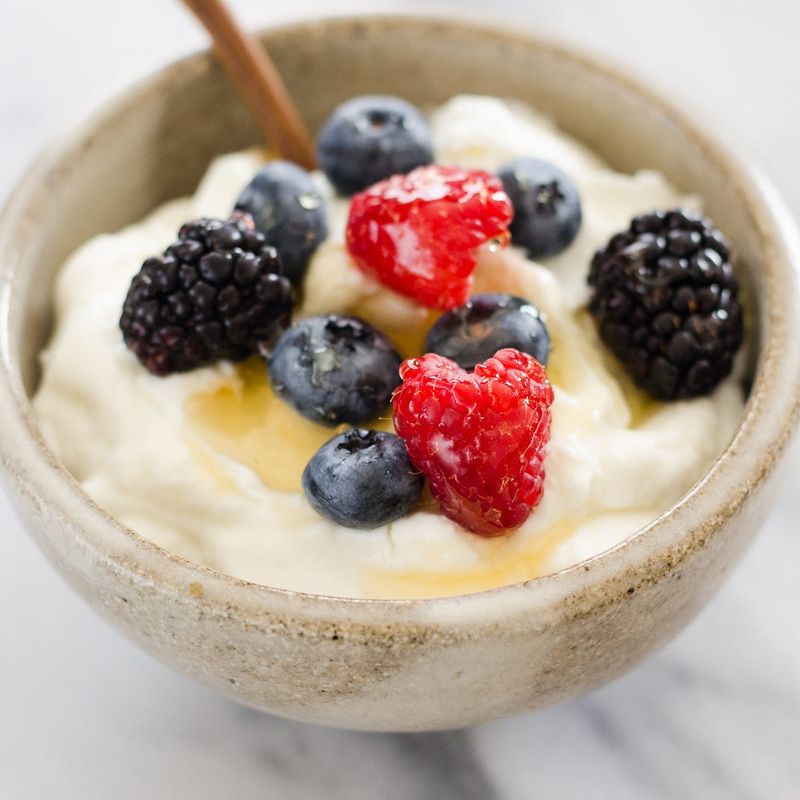
Tangy Greek yogurt works well as a substitute in many recipe calling for sour cream or mayonnaise. With twice the protein and half the fat of sour cream, this swap boosts your meal’s nutritional profile. Try it in dips for veggies, as a topping for baked potatoes, or mixed into cake batters. The thickness makes it suitable for creamy dressings without the heaviness of mayo. Even in baking, Greek yogurt maintains moisture while adding a subtle tang that enhances flavors. For best results, choose plain, unsweetened varieties to avoid adding unnecessary sugars to your dishes.
3. Olive Oil Instead of Butter
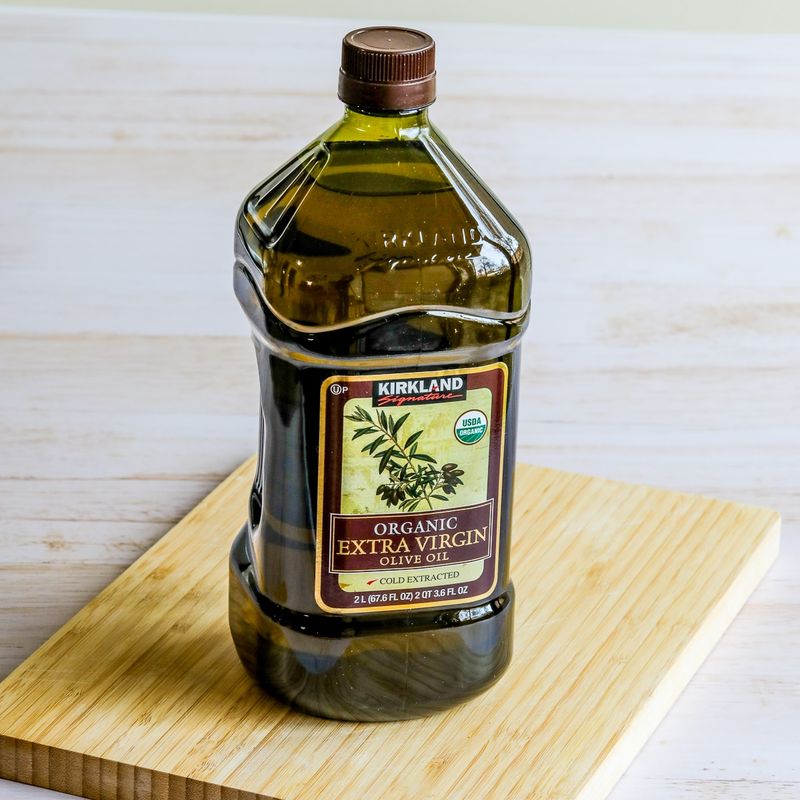
Heart-healthy olive oil brings Mediterranean enhancement to your cooking while cutting out saturated fat. Unlike butter, olive oil contains monounsaturated fats that can help lower bad cholesterol levels when used as part of a balanced diet. For cooking vegetables or drizzling over finished dishes, more virgin olive oil adds a rich, distinctive flavor. When baking, you can substitute olive oil in many recipes at a ratio of 3 tablespoons oil for every 4 tablespoons of butter. The antioxidants in better-quality olive oil offer additional health benefits beside just the fat profile.
4. Mashed Avocado Instead of Mayonnaise

Creamy avocado changes sandwiches and salads with its buttery texture and mild flavor. Unlike mayo, which is mostly empty calories from fat, avocados deliver heart-healthy monounsaturated fats along with fiber, potassium, and vitamins. Simply mash a ripe avocado with a fork, add a squeeze of lemon juice to prevent browning, and spread it on your sandwich. The natural creaminess makes for a satisfying taste without the processed ingredients found in store-bought mayonnaise. For tuna or chicken salad, try a 50/50 mix of mashed avocado and Greek yogurt to maintain the familiar creaminess while boosting nutrition.
5. Zucchini Noodles Instead of Pasta
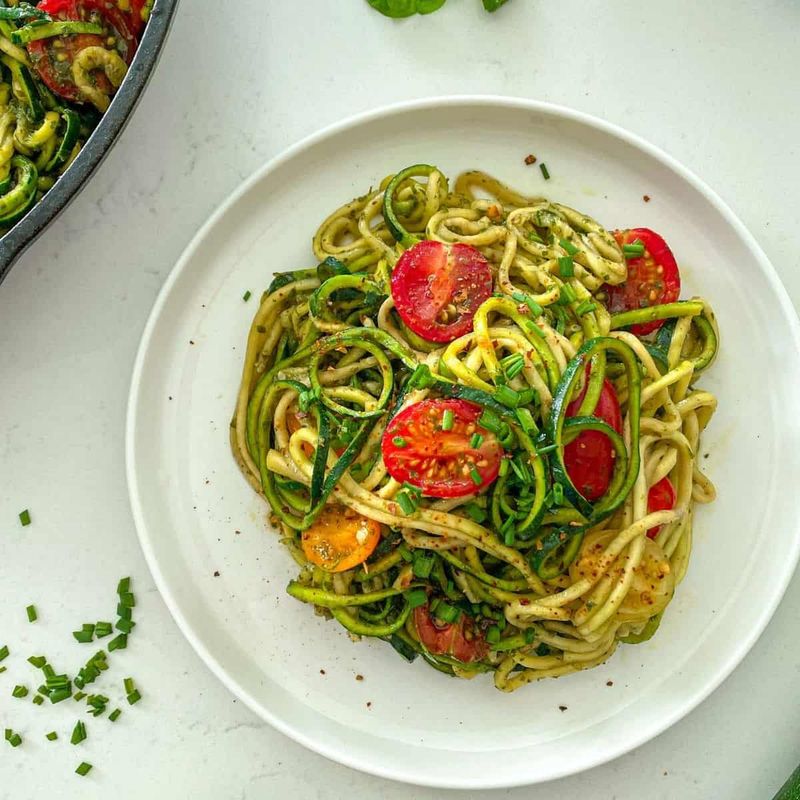
Spiralized zucchini changes into tender noodles that cut carbs dramatically while adding a vegetable serving to your meal. These light, fresh “zoodles” contain just a fraction of the calories found in regular pasta while providing added vitamins and minerals. The mild flavor pairs well with both light and hearty sauces. For the better texture, avoid overcooking—just a quick 1-2 minute cook is all they need to become tender. Many stores now sell pre-spiralized zucchini in the produce section, making this swap even more convenient for busy weeknights.
6. Cauliflower Rice Instead of White Rice

Riced cauliflower provides the familiar texture and versatility of rice with a fraction of the carbohydrates. This simple swap adds more vegetables to your meal while reducing calories significantly—just 25 calories per cup compared to around 200 for white rice. The mild flavor absorbs seasonings beautifully, making it work in many things from stir-fries to burrito bowls. You can make your own by pulsing cauliflower florets in a food processor until they reach rice-like consistency, or save time with pre-riced options from the grocery store. For the better texture, don’t overcook it—a quick cook for 5-7 minutes is usually plenty.
7. Almond Milk Instead of Whole Milk
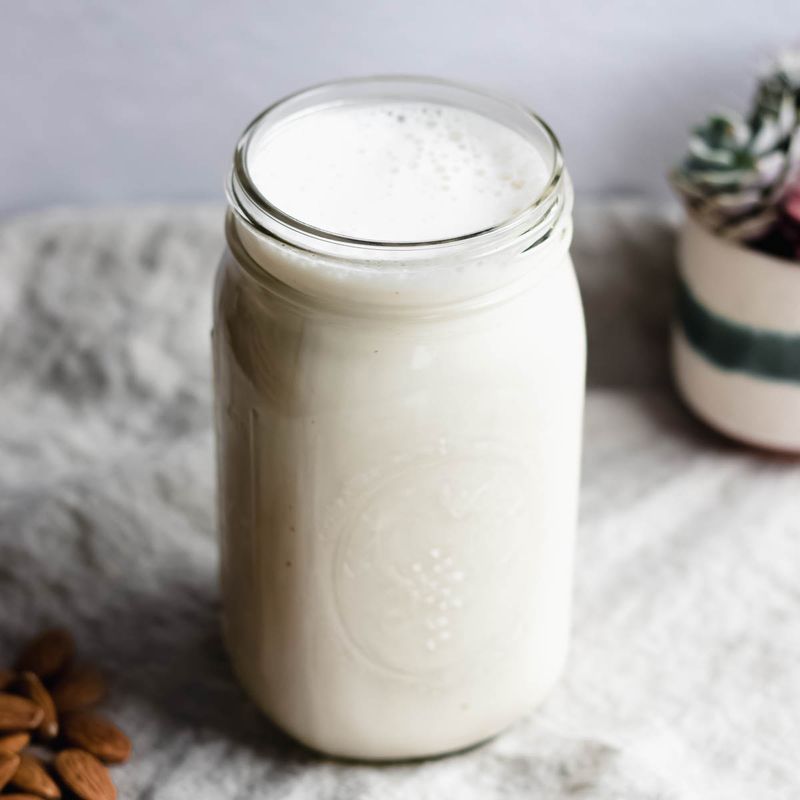
Unsweetened almond milk contains just 30-40 calories per cup compared to 150 in whole milk, making it an easy way to reduce calories in smoothies, cereal, and coffee drinks. The light, slightly nutty flavor works well in most recipes without overpowering other ingredients. Beside being lower in calories, almond milk contains no saturated fat or cholesterol. For cooking, it substitutes well in most recipes, though the lower fat content means it won’t provide the same richness in creamy sauces. Look for varieties fortified with calcium and vitamin D to get nutritional benefits similar to dairy milk.
8. Lean Poultry Instead of Fatty Meats
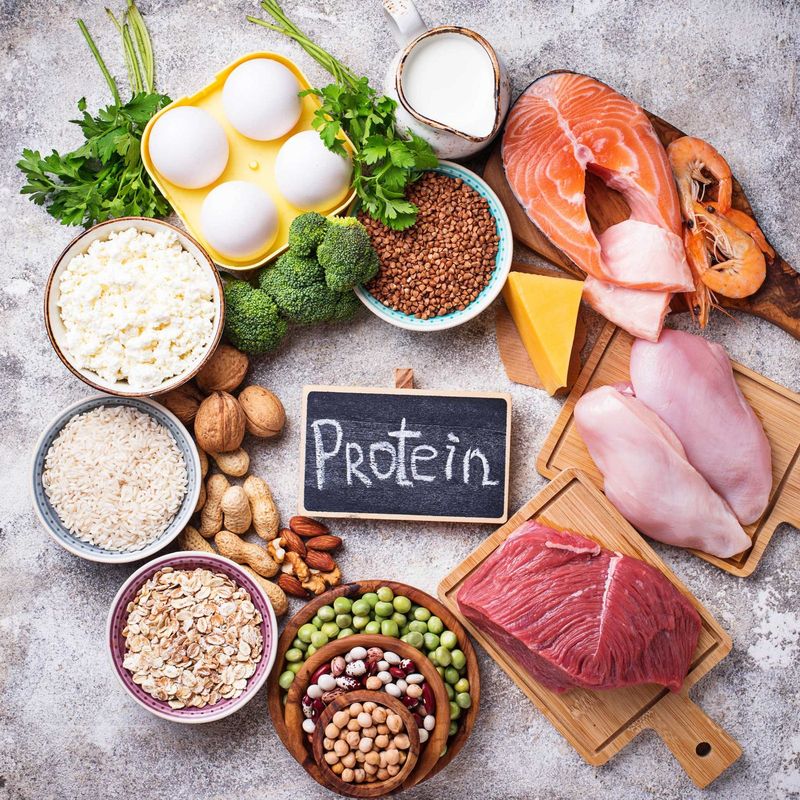
Skinless chicken breast and turkey contain significantly less saturated fat than marbled beef or lamb while still providing high-quality protein. Making this swap can cut hundreds of calories from your meals without sacrificing that satisfying protein component. Ground turkey makes an excellent substitute in burgers, meatballs, and tacos. The mild flavor actually allows spices and seasonings to shine more prominently than they might with stronger-tasting red meats. For improved nutrition, look for poultry raised without antibiotics. And remember that cooking method matters—grilling, baking, or air-frying maintains the health benefits better than deep-frying or heavy breading.
9. Baked Chips Instead of Fried Snacks

Oven-baked chips contain roughly 30-50% less fat than their deep-fried counterparts, making them a smarter choice. The reduced oil content means fewer calories without sacrificing the satisfying crunch we all like. You can easily make your own by thinly slicing potatoes, sweet potatoes, or even kale and baking them with a light spray of olive oil and your favorite seasonings. The homemade approach lets you control exactly what goes into your snack. For store-bought options, look for varieties with simple ingredients lists and reasonable sodium levels—some brands pack in almost as much salt as traditional chips.
10. Natural Sweeteners Instead of Refined Sugar
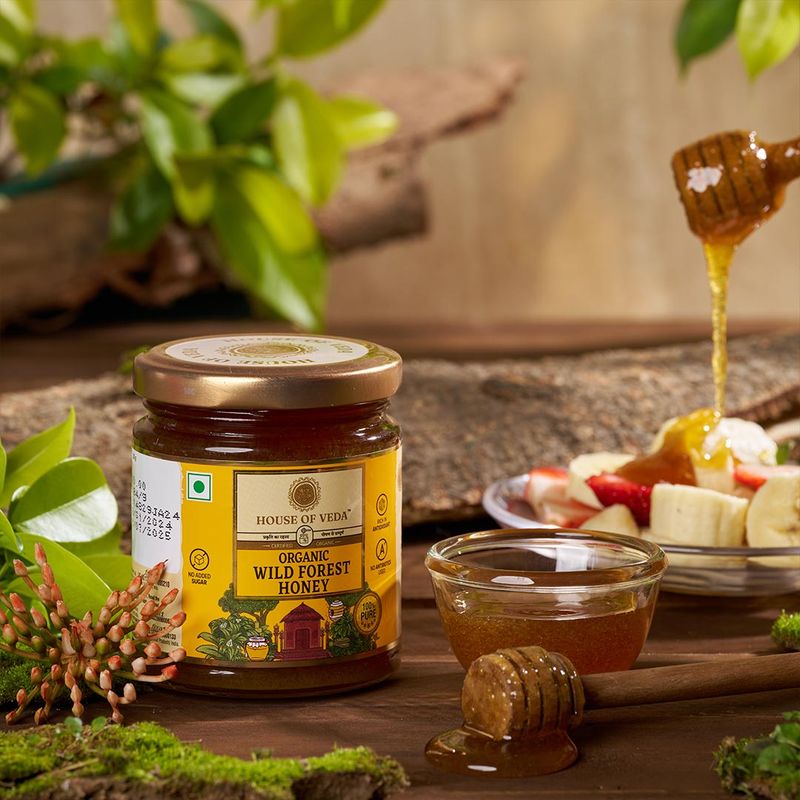
Honey and maple syrup bring more than just sweetness to your recipes—they contain trace minerals and antioxidants completely absent from processed white sugar. Their complex flavors can actually enhance baked pastries and breakfast foods in ways refined sugar cannot. These natural options have a lower glycemic index than white sugar, meaning they cause a more gradual increase in blood sugar levels. When baking, you’ll generally use about 25% less honey than sugar, and reduce other liquids slightly to compensate for honey’s moisture. For sweetening beverages or oatmeal, try stevia or monk fruit extract—plant-derived sweeteners with minimum calories.
